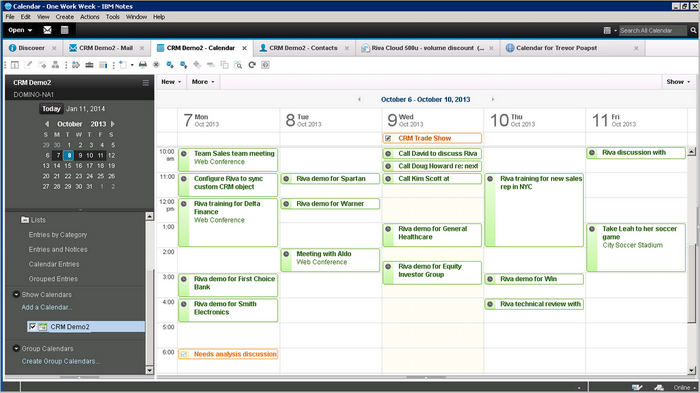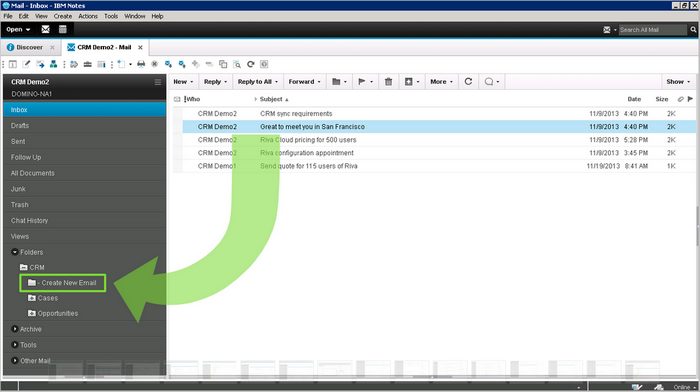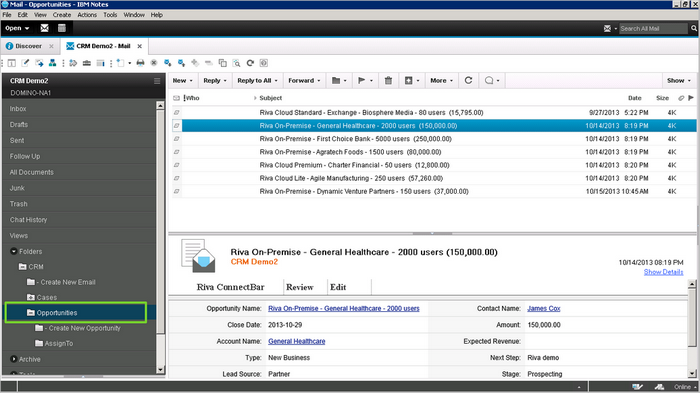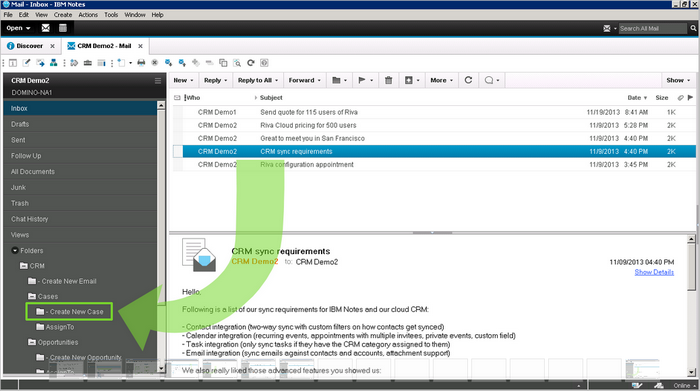|
Article ID: 438
Last updated: 22 Feb, 2021
To understand Riva's basic sync features, read the summary descriptions for each type of data that Riva syncs and watch the videos. Contents:
How Does Riva Sync Your Contacts and Leads?Watch the following videos on contact and lead sync. Sync contacts and leads between your CRM and HCL Notes Sync new contacts from HCL Notes to CRM using a category Sync new contacts automatically from HCL Notes to CRM First Time Sync: Once a user has been added to a sync policy and Riva runs a first time sync against that user, Riva syncs a filtered list of contacts and leads from the CRM and creates those as contact records in HCL Notes. Those contact records appear in the user's Notes Address Book.
Normal Data Sync: Riva can support bidirectional or unidirectional data syncing between the CRM and HCL Notes. When bidirectional syncing is enabled, Riva, by default, syncs contacts and leads as follows:
How Does Riva Sync Your Calendar Events and Tasks?Sync appointments and meetings between HCL Notes and CRM Sync CRM tasks between CRM and HCL Notes to-do's Syncing calendar eventsFirst Time Sync: Once a user has been added to a sync policy and Riva runs a first time sync against that user, Riva syncs calendar items from the CRM and creates those as calendar items in the user's primary calendar in HCL Notes. Those contact records appear in the user's HCL Notes client primary calendar and are colour-coded according to the Riva synced category added to the HCL Notes client.
Normal Data Sync: Riva supports bidirectional and unidirectional data syncing between the CRM and HCL Notes. When bidirectional syncing is enabled, Riva, by default, syncs the calendar as follows:
Note: Riva does not sync marking CRM calendar items as "completed" to HCL Notes. Syncing tasksFirst Time Sync: Once a user has been added to a sync policy and Riva runs a first time sync against that user, Riva will sync task items from the CRM and create those as tasks items in the user's primary to-do list in HCL Notes. Those task items will appear in the user's HCL Notes client primary to-do list and be colour-coded according to the Riva synced category added to the HCL Notes client.
Normal Data Sync: Riva supports bidirectional and unidirectional data syncing between the CRM and HCL Notes. When bidirectional syncing is enabled, Riva, by default, syncs tasks as follows:
How Does Riva Sync Your Email to the CRM?Riva supports archiving emails into the CRM. Emails will be related to email recipients that can be matched to CRM users, contacts, and leads. Riva does not sync emails created in the CRM into HCL Notes. Emails can be used as a source item to create opportunities, cases, or other module items in the CRM, depending on the CRM. Learn more about how Riva can sync emails. Sync emails to the CRM as emailsArchive emails from HCL Notes to CRM First Time Sync: During the first sync, Riva creates and manages a set of folders in each user’s mailbox. This folder contains “smart” folders that Riva uses to allow users to interact with Riva. These folders are used as “drop” folders or “display” folders for the different CRM object types. By default, the default “drop” folders include “- Create New Email, - Create New Opportunity, - Create New Case and – AssignTo folders for each of the objects that have been enabled on your sync policy. The default “display” folders display relevant opportunities, cases, quotes, projects and custom objects based on the sync policy that applies to each user. Not all users will see all folders. And, keep in mind that the folders might have different names based on how Riva was configured for your company’s implementation.
Normal Data Sync: By default, Riva archives emails and matches the email recipients to the CRM user first, then to CRM contacts, and then to CRM leads (if enabled in the sync policy). Riva can be configured to sync emails and create module items in the CRM, typically new opportunities, cases, projects, or quotes. Riva also supports custom objects for some CRMs. For each email placed in a "drop folder", Riva archives it to the CRM as follows:
Sync CRM module data to emailManage, connect to and edit CRM opportunities directly from HCL Notes Use summary emails to quickly look up Items in the CRMNormal Data Sync: Riva creates summary emails in the HCL Notes mailbox in the module folders of the drop folder structure, for example the Opportunities folder. Those emails contain summary information about each active module item (for example, an opportunity). Each email also includes a button or website link to open the module item in the CRM in either Edit or View mode.
Convert emails to create CRM opportunities, cases, projects or custom objectsUse SmartConvert to convert an HCL Notes email into a new CRM opportunity First Time Sync: During the first sync, Riva builds, in the user's mailbox, a new folder structure that contains "drop folders". Drop folders (for example, "- Create New Opportunity") are added for each module that is enabled in the Other tab of the sync policy.
Normal Data Sync: When a user places an email in a "- Create New [module]" folder, Riva processes that email as follows:
Use AssignTo to create and track email against existing opportunities and casesWe have not yet recorded a video to demonstrate the Riva AssignTo option for the HCL Notes client. But, the AssignTo email tracking functionality is the same for HCL Notes, Outlook, Gmail, GroupWise, and all mobile clients. So, the following video demonstrates that functionality in an Outlook email client.
Use AssignTo to archive emails against existing opportunities and cases Create and track emails against opportunities and casesFirst Time Sync: During the first sync, Riva adds an \Assign To\ folder under the parent module folder for each module enabled in the Other tab of the sync policy. Riva adds a drop folder for each active module item that is either visible to or owned by the user. The folder name is based on the module item:
Normal Data Sync: When a user places an email in an AssignTo drop folder, Riva processes that email as follows:
How Does Riva Work with Tablets and Smartphones?Check out our KB articles about syncing CRM data with mobile devices:
Other Training VideosCheck out our YouTube videos where you can see:
This article was:
Helpful |
Not helpful
Report an issue
Article ID: 438
Last updated: 22 Feb, 2021
Revision: 12
Views: 6984
Comments: 0
Also listed in
|






